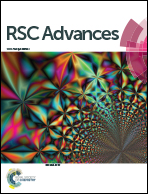Study on the simultaneous reduction of diesel engine soot and NO with nano-CeO2 catalysts
Abstract
Three nanometer cerium oxide (nano-CeO2) catalysts were prepared by a precipitation method in order to reduce particulate matter (PM) and nitrogen oxide (NOx) emissions from diesel engines through after-treatment technology. X-ray diffraction (XRD), Raman spectroscopy, scanning electron microscopy (SEM), and Brunauer–Emmett–Teller (BET) analysis were employed to characterize the catalysts. The catalytic activity was evaluated by analyzing the ignition temperature, peak temperature of soot combustion and conversion of nitric oxide (NO) to nitrogen (N2). The results show that the average particle sizes of the three prepared CeO2 catalysts are 7, 12 and 20 nm, respectively, which are much smaller than that of commercial CeO2 (comm-CeO2); also, the prepared CeO2 catalysts have larger specific surface areas. The catalytic activity of CeO2 increases as its specific surface area increases. The efficiencies of the catalysts for the oxidation of CeO2 on soot are 20, 12 and 7 nm, in descending order. The ignition temperatures of soot combustion were reduced by 124 °C, 109 °C and 93 °C and the peak temperatures decreased by 185 °C, 104 °C and 102 °C when the three CeO2 catalysts were employed. The conversion of NO is greater than 70% at 370 °C to 550 °C, which indicates that prepared CeO2 has a wider temperature window. The presence of oxygen vacancies on the CeO2 surface greatly increases the adsorption energy of NO and can promote the reduction reaction of NO.


 Please wait while we load your content...
Please wait while we load your content...